Peacock bass found at Gooseponds
Peacock bass are a large, predatory freshwater fish species native to South America. The attractive markings, large size and fighting qualities make the species a highly prized sport and aquarium fish but the voracious nature and diet which consists primarily of juvenile fish, make the species a significant threat to native fish communities.
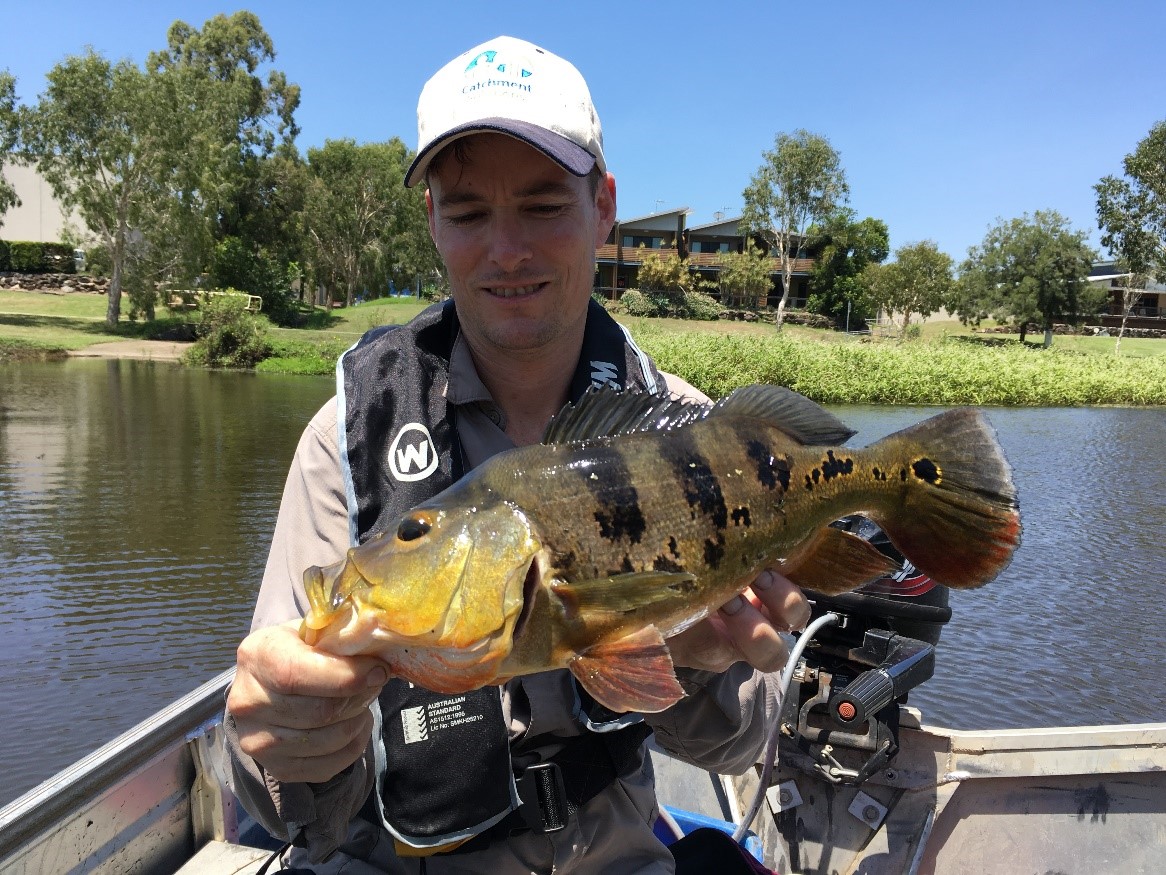
Peacock bass found at Gooseponds
Peacock bass are a large, predatory freshwater fish species native to South America. The attractive markings, large size and fighting qualities make the species a highly prized sportfish and extremely popular aquarium fish for hobbyist fish-keepers around the world. Despite this, the voracious nature and diet which consists primarily of juvenile fish, make the species a significant threat to fish communities when released outside of their natural range of the greater Amazon basin in South America.
In January 2018, reports circulated of a Mackay angler who had captured a peacock bass below Dumbleton weir in the Pioneer River. The capture represented the first substantiated reports of peacock bass in Australian waters and generated significant public interest and concern. The potential incursion of this species presented a significant threat to fisheries resources in Mackay, with this large predator capable of severely impacting the abundances of native fish communities.
Following the capture, Catchment Solutions were engaged to undertake extensive electrofishing surveys of the capture location and further throughout the Pioneer River to investigate the extent of the incursion of the species. Following the surveys, no peacock bass were detected in the catchment, suggesting numbers of the species were extremely low, if present within the system.
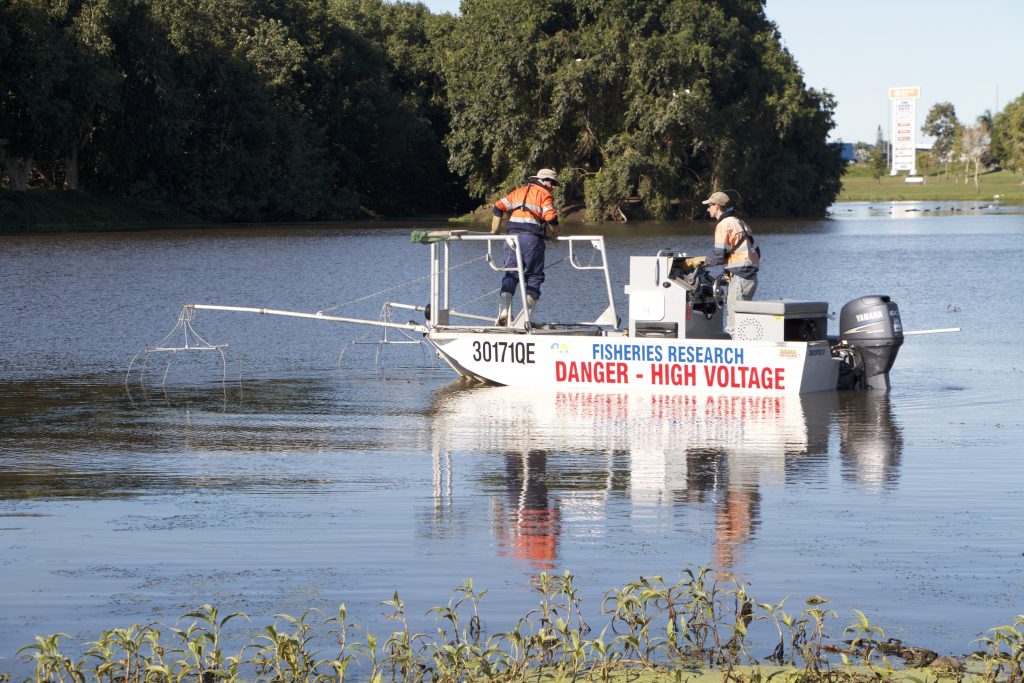
In January 2019, a further two separate captures of peacock bass were reported from the Gooseponds wetlands in the centre of Mackay’s urban area. These captures were also supported by photographic evidence and suggested that higher numbers of the species were prevalent throughout the Pioneer catchment than initially anticipated. Catchment Solutions were again tasked with investigating the captures, and additional electrofishing surveys were undertaken, however this time, focussing efforts throughout the artificial wetland lagoons of the Gooseponds which were not previously surveyed.
Boat-based electrofishing surveys were undertaken throughout the entire Gooseponds wetlands with each of the major lagoons, including all of the channels connecting the lagoons, being extensively electrofished. Unfortunately, two mature male peacock bass measuring 420mm and 395mm were collected during the surveys. These individuals were removed from the Gooseponds for genetic and gut content analysis in order to establish the origin of these fish, and also the feeding behaviours of these fish when unlawfully introduced into tropical Australian waters. It is likely that continued monitoring into the future will be required to ensure any remaining individuals are removed from the system to ensure an outbreak of the species does not arise.
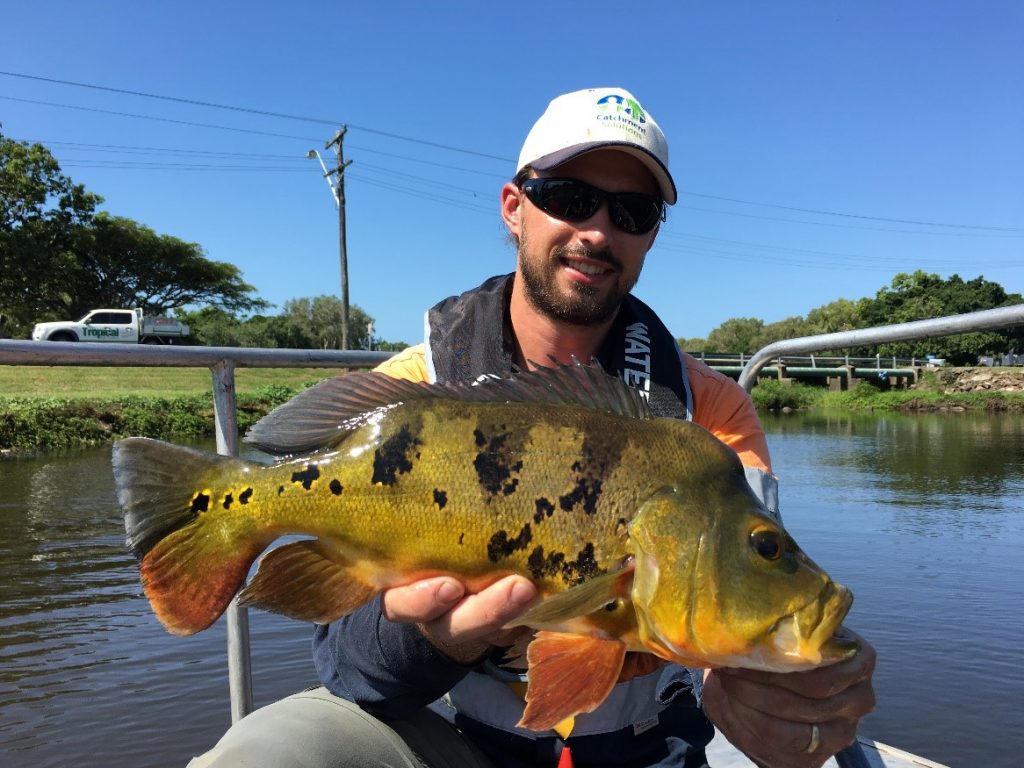
Gooseponds a great place for Barramundi!!
- This 920mm barramundi was a great catch in the lower areas of the Gooseponds.
- As part of the survey 77 barramundi were caught throughout the Gooseponds
- Fish measuring from 220mm young-of-year recruits right through to large, 920mm mature adult fish were surveyed.
Gooseponds fish survey record a diverse range of native species.
Throughout the surveys, the capture of all additional species was also recorded. A diverse range of native species were captured in high abundances, showing the vital role the Gooseponds play in providing habitat to a range of important species. In total, 77 barramundi were caught throughout the Gooseponds, measuring from 220mm young-of-year recruits right through to large, 920mm mature adult fish. A rock-ramp fishway constructed at the downstream limit of the lowest lagoon provides fantastic access for juvenile barramundi to enter the Gooseponds from the Pioneer River estuary, where the juveniles can utilise the wetlands for refuge, feeding and growth. Many other diadromous, migratory species also utilise the rock-ramp fishway to access the Gooseponds including mangrove jack, sea mullet, giant herring, tarpon, banded scats and snakehead gudgeons.
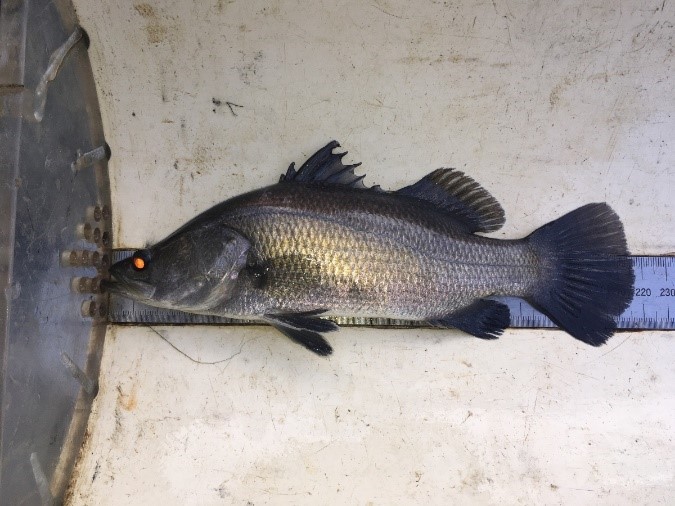
Unfortunately, relatively high numbers of introduced tilapia were also caught during the monitoring, which have now become well-established in the Gooseponds since being first identified in the system only several years ago. This species is now one of the most prevalent species in the Gooseponds and highlights the speed with which pest fish can establish themselves when allowed to do so. This species is a declared noxious species in Australian waters and as with all pest fish, including peacock bass, if captured must not be released or distributed and must be immediately disposed of upon capture.
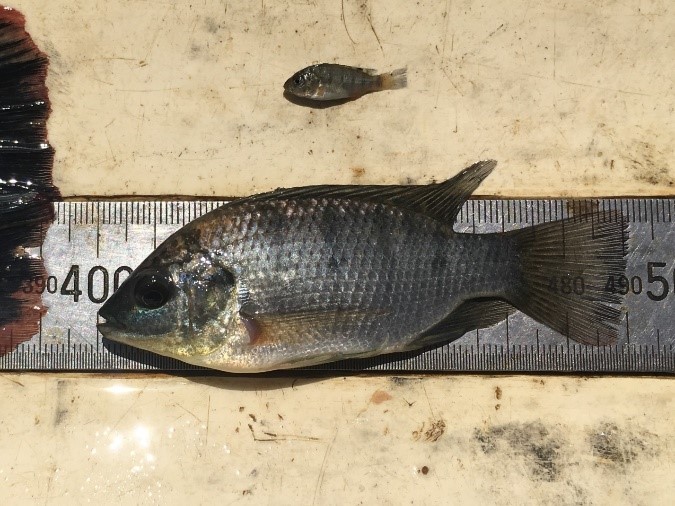
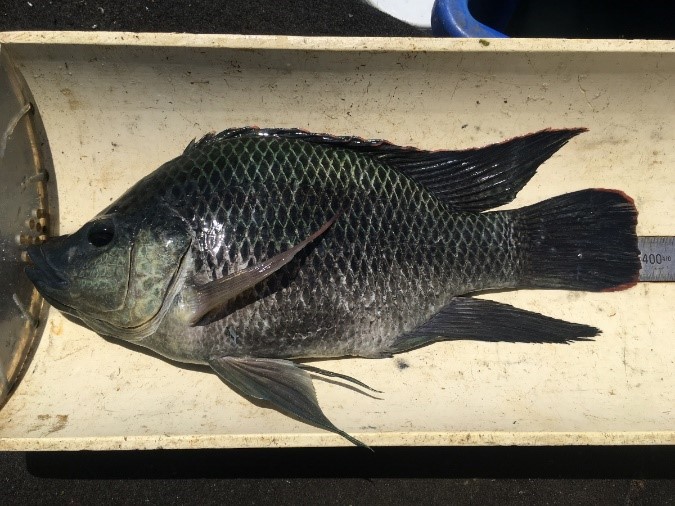
Above the introduced pest fish, tilapia, which were caught in the Gooseponds during the monitoring.